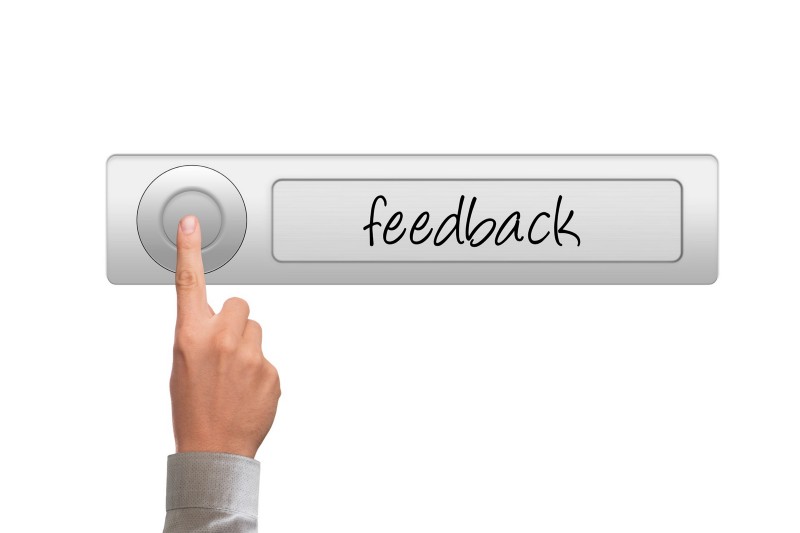by Yisroel Yakovson
What You Need to Know About Your Users in 2019

Users have changed a lot in the last few years. We programmers may have a culture gap to overcome in this area. If you want to onboard and keep users, you’d better get this straight!
I’ve had the opportunity to work with real users in the past month. My team is building a tool for creating web apps. I released a simple web app in alpha a month ago.
I started by onboarding 10 users that I knew personally. In fact, together we create calendars of events in our community. The goal of the platform is to simplify what we had been doing manually. I knew that they would be sympathetic.
But they did not follow through with the onboarding. At first, I felt frustrated and insulted by what I assumed was a lack of interest. Then I learned that many were actually excited and supportive. The problem is that I was not following three golden rules for today’s users. If you don’t follow these, you’re lost in 2019.
(1) No Searches
It’s not that users are lazy. It’s more that search muscles have atrophied. People need a link any time you want them to do something.
I sent a few messages to someone to follow through with entering data. When I finally called him, he told me that he didn’t “have it”.
At first I didn’t understand. Have what?? He explained that he didn’t know how to get back to the site. That seemed weird to me, because I’d given him links in earlier messages.
Here’s a culture gap: developers search all the time, but normal users don’t at all. You can observe three phases in the history of how users have found their way back to visited sites:
- People once stored “Favorites” in their browsers. Power users also scanned their history.
- Searching replaced “Favorites”. Google’s search algorithm optimized the weighting of visited sites against new hits. What we had in mind popped up magically.
- Today, update push notifications have built the expectation of a link. A well-written app no longer waits for the user to come back — it reaches out and pulls them back. Many users can’t find their way back to you without the link, no matter how many times they’ve visited before.

I couldn’t understand why people kept asking me to send emails again. Then I figured out that it’s presumptuous of me to ask them to search for a past email. They probably don’t remember how, if they ever knew. The most I can hope for is that a user will scroll forward or back by a screen.
I’ve figured out that if I send a link with all the fields filled out already then they’ll convert. So I tell them that it’s a “shortcut” and use parameters in the link for the field values. We plan to build an “invite” feature to help users to onboard others that way.
(2) No Reading
I kept sending messages of explanation. But my users would ask me what I’d already explained. At first, I suspected severe technophobia or lack of mental ability. Then I realized that they were ignoring my words and clicking on the link.
Do you remember learning math in first grade, with the dreaded “word problems?” Most of us ignored the words and added up the numbers. It worked for the first few months, until some problems started to require subtraction. Imagine that your user is in that first grade class and you should be alright.
Again, it’s a culture gap. We developers have to read a lot, but don’t expect others to read a thing.
Watch people on their phones on the bus. They scan feeds rapidly and fire off occasional brief responses. Users today don’t bother to text more than a few essential words — too much of a pain on a phone. Besides, they know that their recipients won’t read more than the first few words anyway.
Someone somewhere must be posting original material. Maybe they’re a holdout from an older, stronger generation. Whoever they are, they’ve figured out that it’s got to be brief if not an image. Everyone else is forwarding things or clicking on “Like”.
An expert told me 3 years ago that the average user attention span is two seconds. But that’s ancient history today. I think it’s a half second. This could be a symptom of the world transitioning from Facebook to Pinterest.

Our team responded by rebuilding our interface for data entry. The user now enters a list of items one at a time and nothing more. Sadly, our user has lost a layer of sophisticated groupings. But it would’ve taken a few complete seconds to learn, violating the second golden rule.
(3) No Feedback
Whatever happened to the good old disgruntled customers who loved to complain? The answer is that nobody cares enough to complain any more. Users don’t even try to figure out what’s wrong. In two seconds they’ve forgotten you, as if you were a tweet.
Again, there’s a culture gap at work here. We developers tend to be a proactive bunch. But most people aren’t. In fact, most won’t answer questions until I call.
I know my first ten alpha users personally, as I mentioned. That lulled me into the mistake of not tracking. I just sent them an email. I couldn’t understand why I was not receiving notification of their registrations. I assumed that they’d blown me off.
It turns out that most of them tried to register. There was a technical problem, due to their internet filters, and nobody bothered to tell me. In fact, even when I follow up, they don’t offer much feedback on their own. We keep repeating these steps:
- We change something
- I ask them to try it until they do.
- I contact them again and ask them what went wrong.
The first thing I now ask whenever I talk to a user is if there have been any problems.
We plan to add a help button. But I’m skeptical that many will push it. What’s in it for them?

Takeaway
One ancient truth remains even today: the customer is always right. In fact, it’s more so now than ever, because users will vanish in a heartbeat.
So, we’d better face facts. The three golden rules above paint a clear picture. Your user remembers nothing from the past and doesn’t think about the future. And even in the present, their experience of your service is not a relationship. At best, it’s a habit. It’s no wonder that Silicon Valley is open and unashamed about trying to “addict” people.
So how do you approach UX (User Experience) in 2019? Think of the interface as a series of single click decisions. Just one link, field or button at a time. You have only one job: get them to click it.

